A daily challenge
Daily challenges are a fun way of stretching your creativity. Years ago I worked on the National Novel Writing Month challenge and I’ve done a drawing a day for a month before. This time I joined the makevember challenge after I read about it on the Make Magazine Blog and made 29 automata in a month. In short, the makevember manifesto proposed:
“Every day in November make a thing – if you can’t do it every day then do what you can, but the idea is to push yourself to work daily and with less procrastination. Do not attempt to put your ducks in a row first.”
The first project I made set the tone for the rest of the month. That wasn’t my intention but I liked the aesthetic of the first pieces so I kept on going with the same materials and look for the rest of the month. My first piece was a simple automaton and I used the materials I had on my desk. Paper clips, a wooden block left over from the Opposable Thumbs Podcast challenge, and some popsicle sticks. The A-HA moment from these projects was when I discovered that using paper gives these machines a very organic feel. Some of them would look very stiff and mechanical otherwise. Paper is also very easy to work with and you can make many versions and experiment freely. Paper is versatile, it can be made to function as a structural element, or spring, or washer, or decoration. Even 2-dimensional shapes can jump to life with simple motions when made out of paper.
One wonderful bonus of posting these projects on my twitter account was the positive response from the STEAM and maker educator crowd. I saw many projects that were inspired by my own and there are few things as rewarding as that. @grajohnt made a 3D printed base with a moving hand, Donald Bell from Maker Project Lab made a flying turkey and an octopus using a cardboard base, the walking man from day 6 saw a good number of variations including a baseball card, skateboarder and a cat on a tightrope.
And don’t forget this wonderful project from the kids at the Escuela AURO in Barcelona, they made a video and even sent me some beautiful handwritten letters.
I’ll leave you a with a gallery of all the creations in chronological order and I’ll discuss some more details below. You can also see them as collection on Twitter, on my giphy.com channel, as the original videos on my Instagram page (links to individual days: 2, 3, 4, 5, 6, 7, 8, 9, 10, 11, 12, 13, 14, 15, 16, 17, 18, 19, 20, 21, 22, 23, 24, 25, 26, 27, 28, 29, 30).
Or you can watch all of them in this 6-minute video compilation I uploaded to youtube.
November 2:
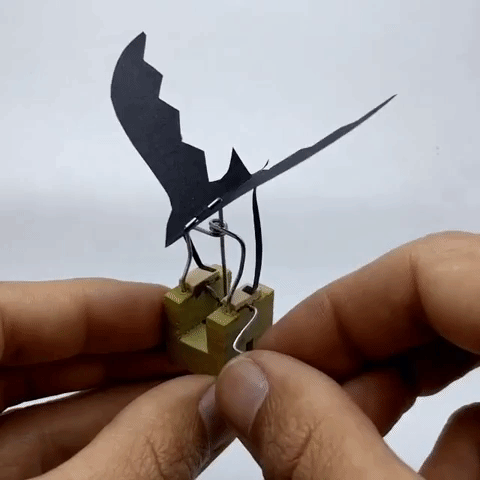
November 3:
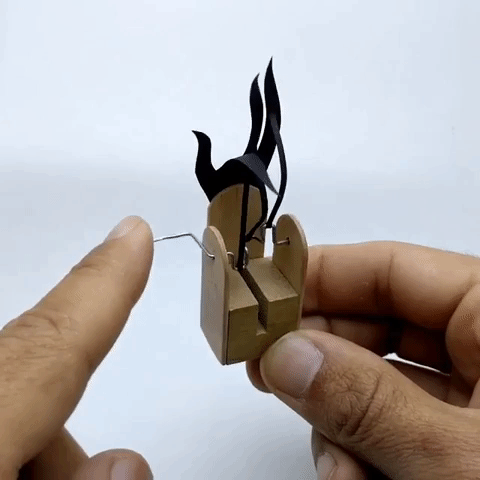
November 4:
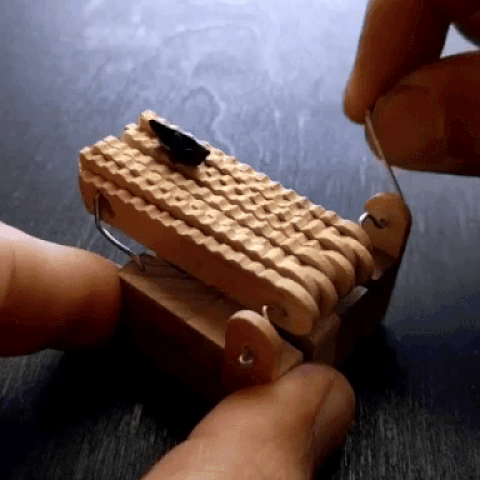
November 5:
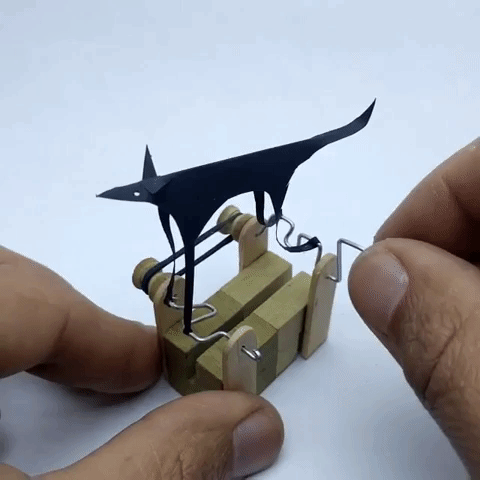
November 6:
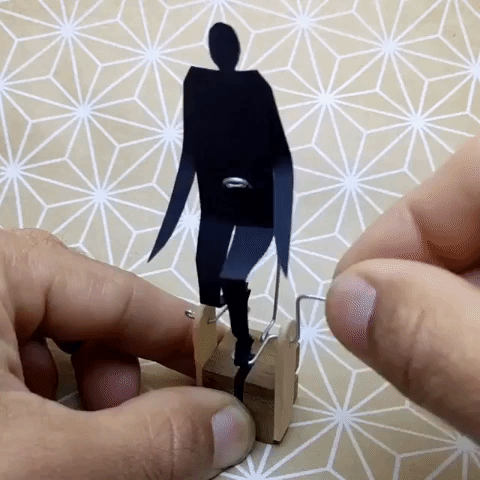
November 7:
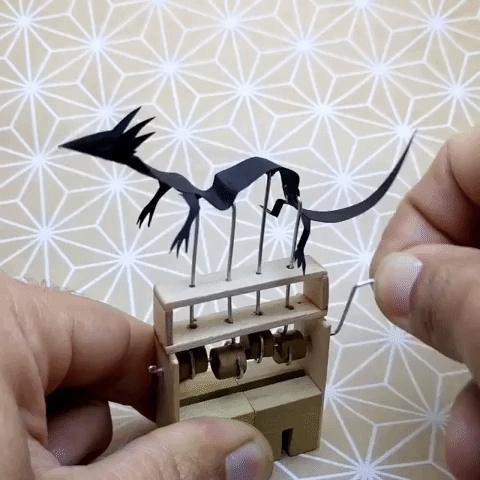
November 8:
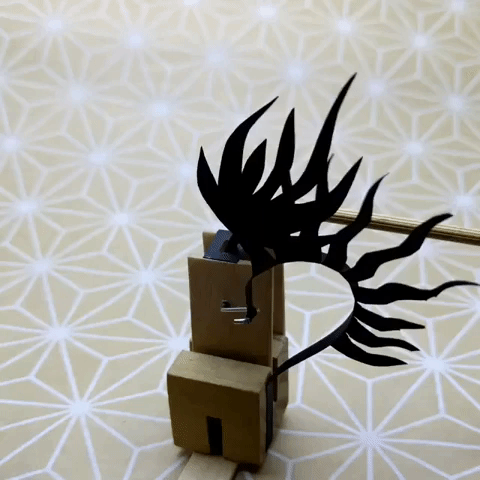
November 9:
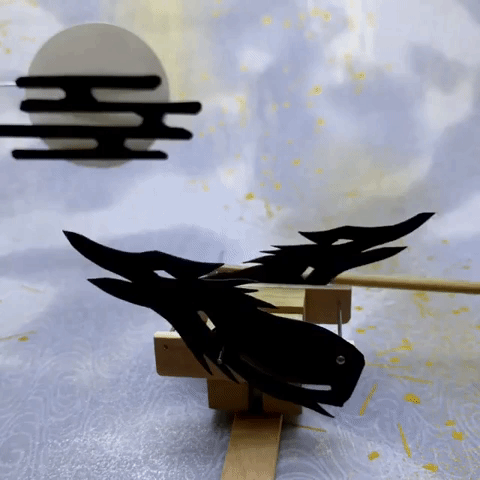
November 10:
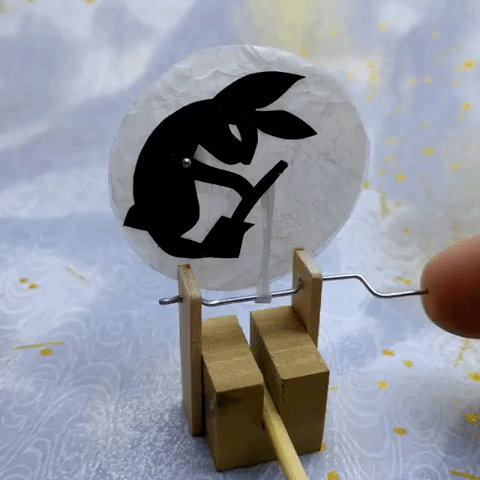
November 11:
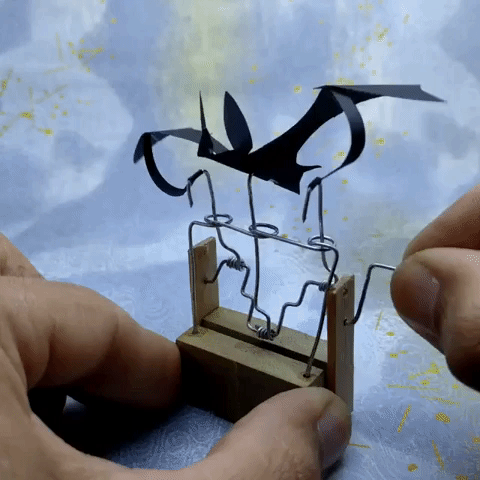
November 12:
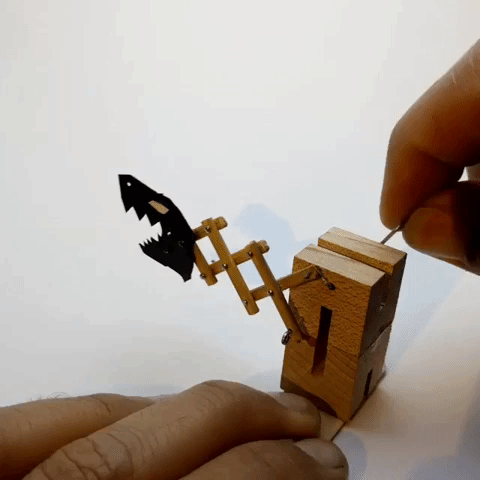
November 13:
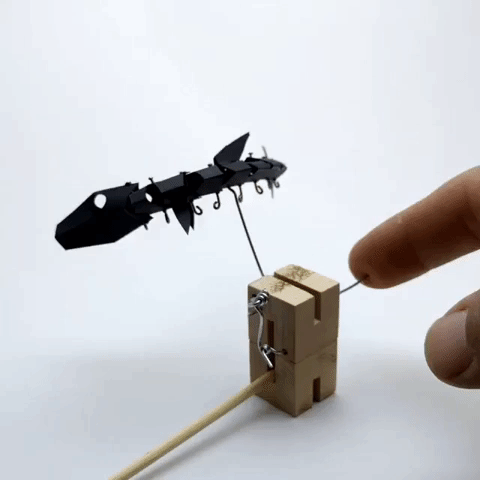
November 14:
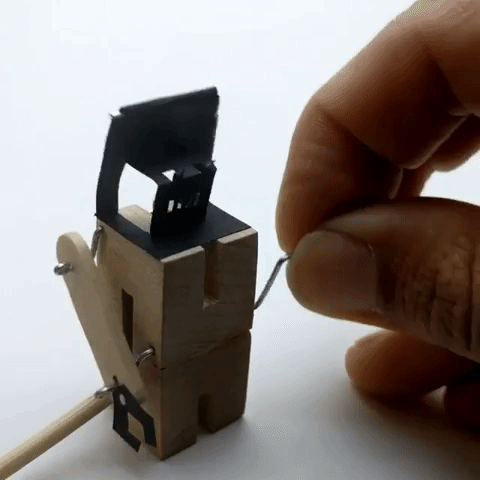
November 15:
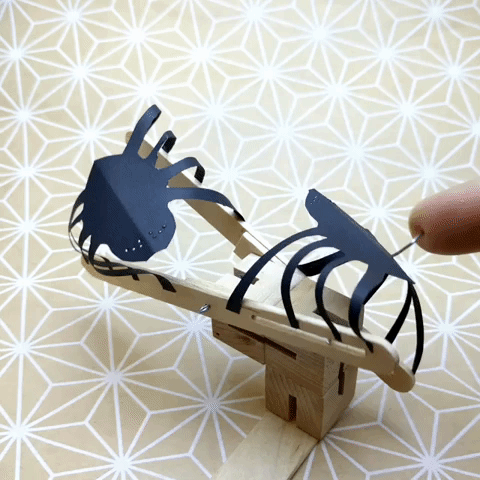
November 16:
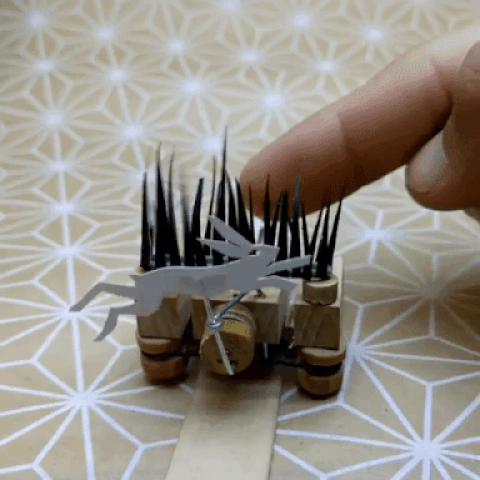
November 17:
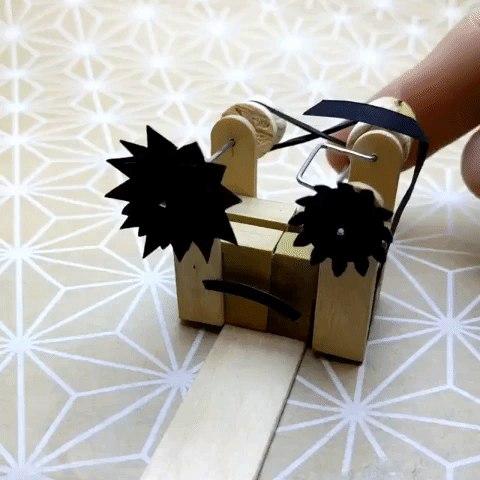
November 18:
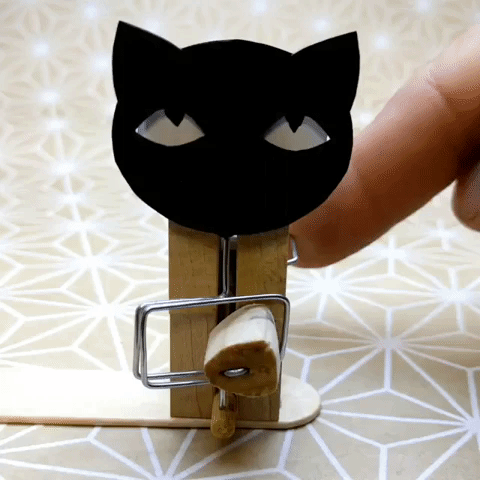
November 19:
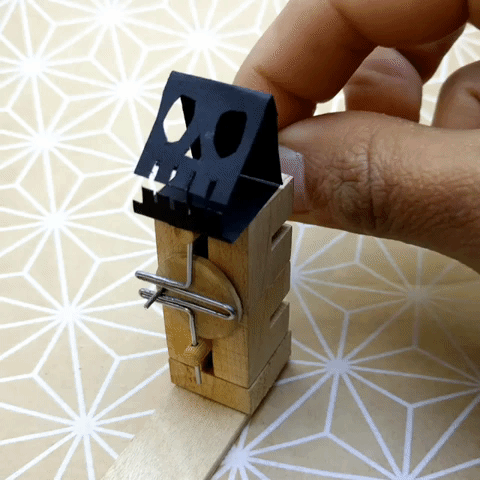
November 20:
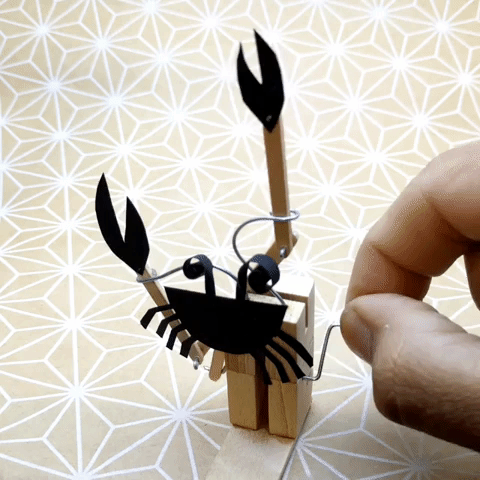
November 21:
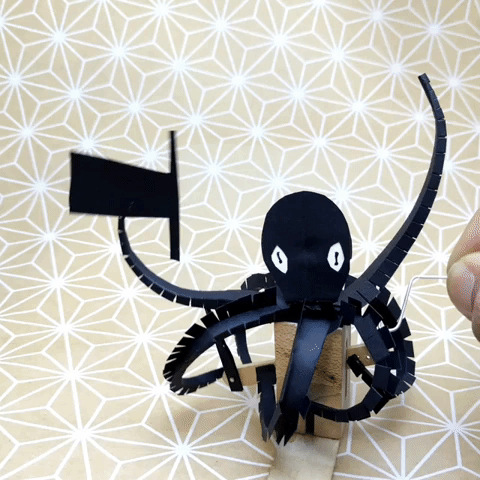
November 22:
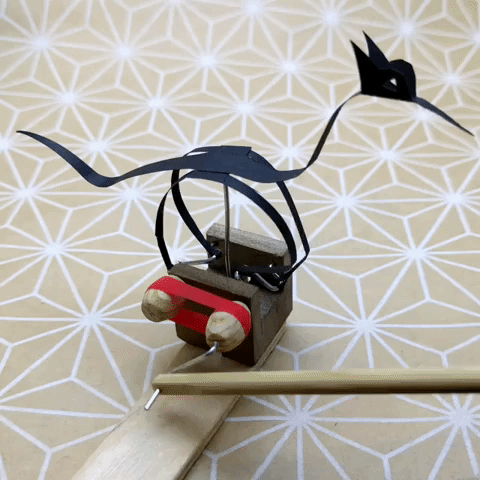
November 23:
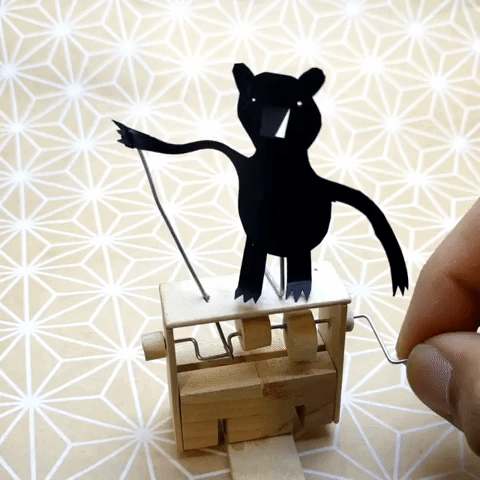
November 24:
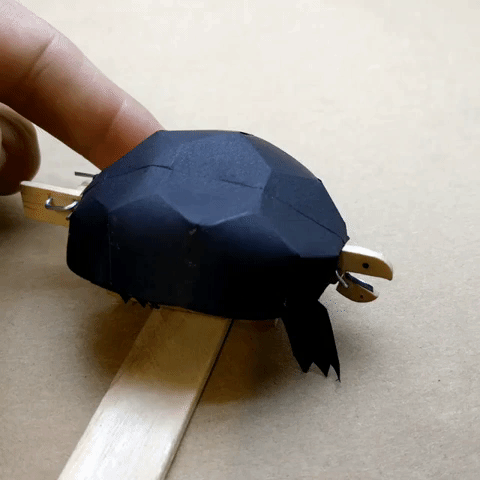
November 25:
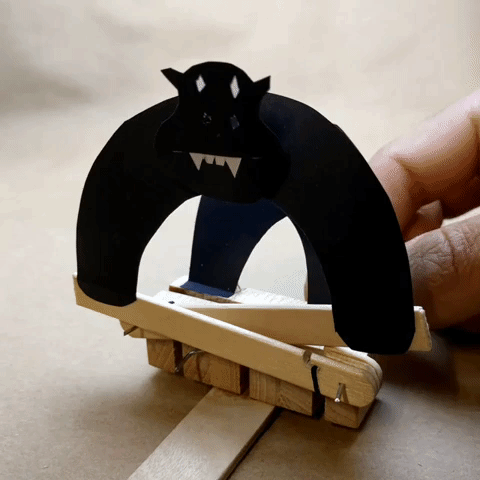
November 26:
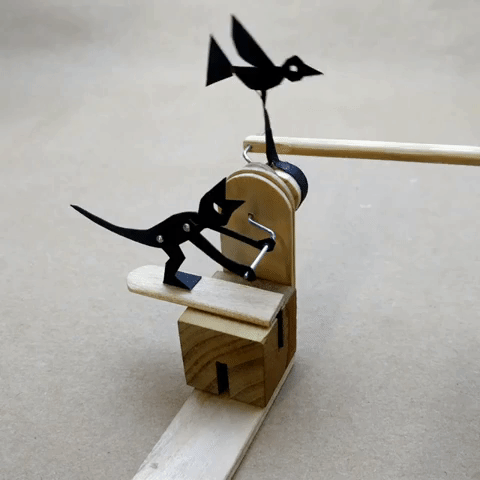
November 27:
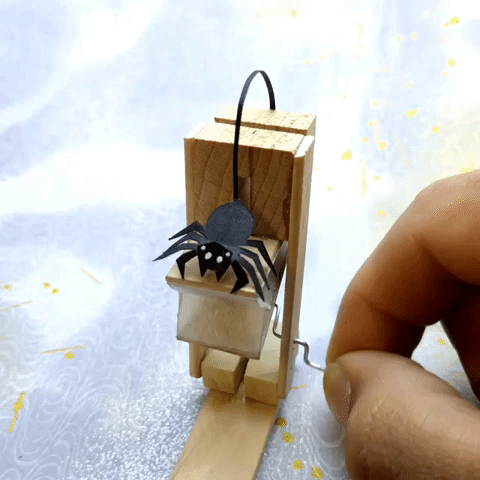
November 28:
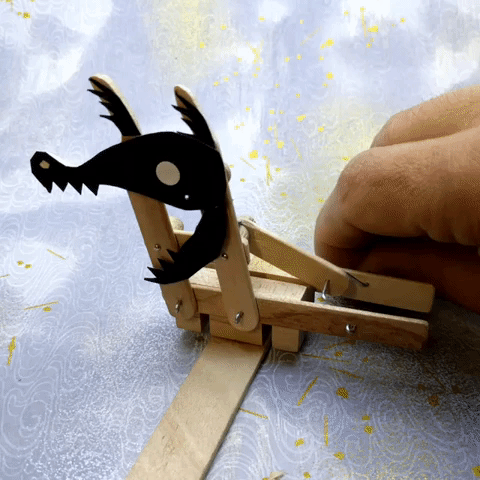
November 29:
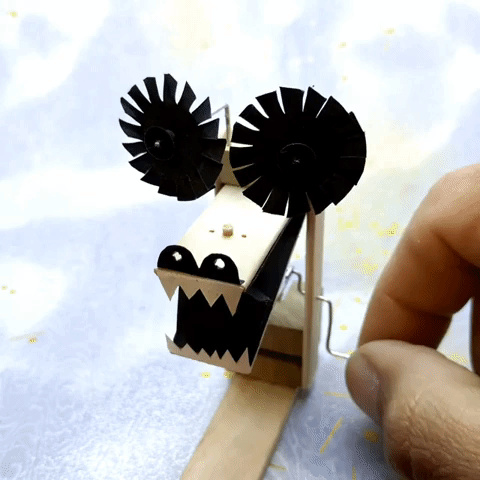
November 30:
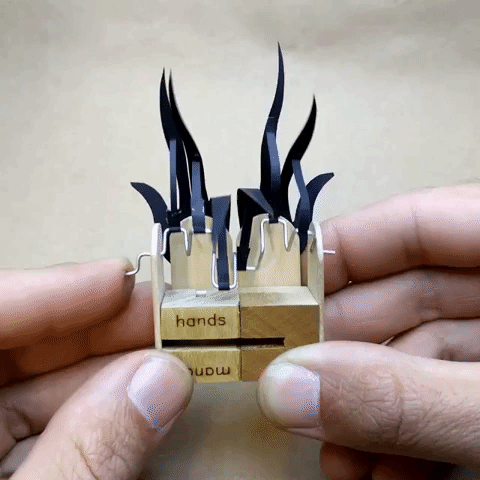
The base for most of these was made using small 0.75 in x 0.75 in cubes I had cut from a 0.75 in square hardwood dowel I got at the hardware store. Poplar to be specific, which explains the green tint. I limited myself to common materials and tools (although at times I was tempted to cut some gears on the CNC). I used the following materials and supplies:
The tools used were not extraordinary:
The process for each piece was different. Sometimes I started with a very specific idea of what I wanted overall, sometimes I was curious about using a particular mechanism and built that before the paper character, and sometimes I started with the gesture I wanted and tried to make it work.
There was a lot of tinkering, some happy accidents and a fair amount of frustration. One book I kept on my bedside table for inspiration was the classic 507 mechanical movements and I often consulted the companion website 507movements.com where some of the animations are much more clear than the original diagrams. I took a few hints and inspiration from Rob Ives who is an amazing creator of paper-based moving projects. His bellows diagram was helpful for making days 27 and 29.
Day 22 uses the uncanny crowned pulley and if you want an explanation of how it works Matthias Wandel made a really good video. Day 16 was inspired by the “crankies” my friend Candice told me about, the crankie factory website has all the resources you need if you want to build your own.
A few people asked me how to get started making automata, my favorite book so far has been Karakuri by Keisuke Saka. The models are made out of paper, which adds another layer of complexity, but also requires very little to get started. The first 10 models are basic mechanisms and are a really good introduction. If you don’t mind working with paper this is a nice book because you can get started building things right away with minimal tools. If you want to give the papercraft style a swing without spending too much money you can download Rob Ives’ agreeable sheep for free.
I didn’t set out to write a how-to article but if you want more details on specific mechanisms or building techniques please send me a message. Thanks for reading!
People have been asking me how some of the mechanisms work so I’ve started making some videos, if you are interested in a deeper dive on any specific one send me an email: